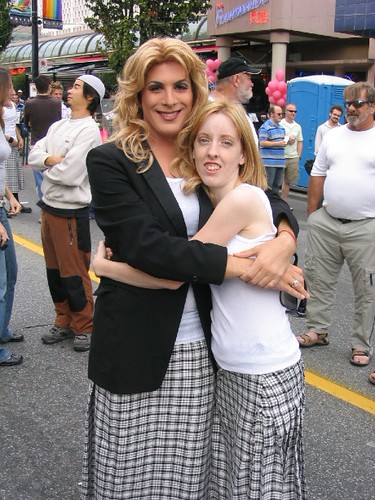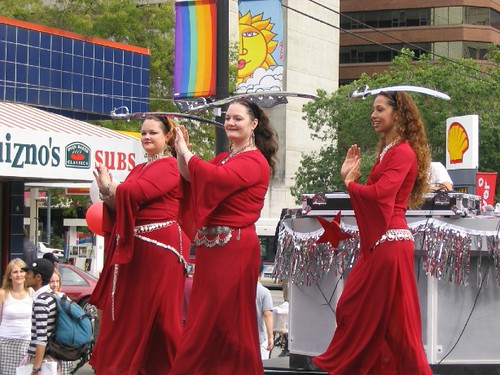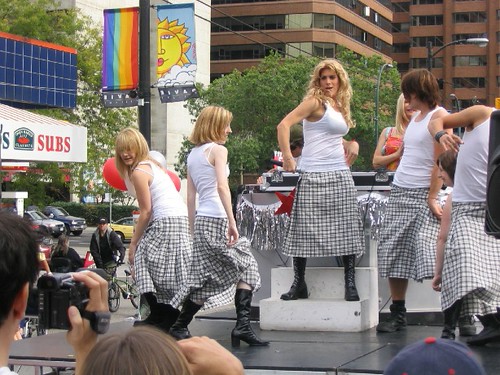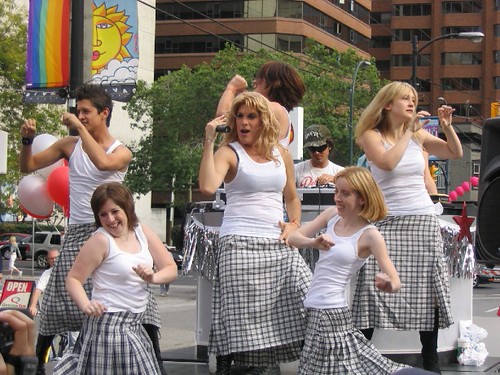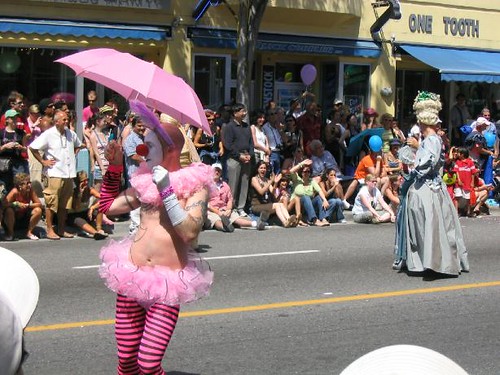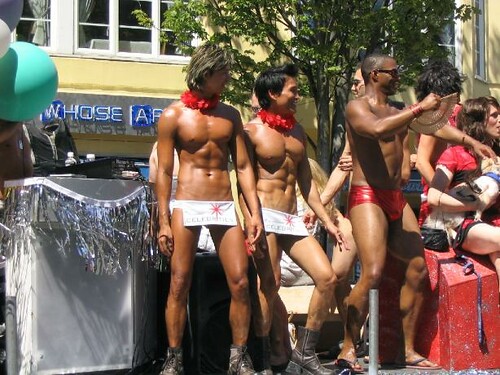The Books of Magic was an ongoing series published under the Vertigo imprint from 1994 to 2000, spanning 75 issues. It told the story of Timothy Hunter, a thirteen-year old dark-haired, bespectacled British boy who learns he is destined to become the most powerful magician of his era. The Books of Magic followed Tim as he learned to handle the usual problems of being a teenager, all the while growing into his power, learning about his heritage and future, and dealing with supernatural enemies. I discovered this series shortly after discovering Sandman, in the summer of 1994. The Books of Magic was a wonderfully written and illustrated series that mostly lived up to its name, and I faithfully kept up with it right until the end. After Sandman ended in 1996, it was the only comics series I collected.
Tim’s adventures actually began in a four-part miniseries (entitled The Books of Magic), which came out in 1991. Written by Neil Gaiman, it introduced the twelve-year-old Tim, who is accosted by four mysterious strangers (John Constantine, Doctor Occult, the Phantom Stranger and Mister E); they tell him he is destined to become the most powerful magician of this age and offer to show him the ways of magic. Tim is taken on a whirlwind ride to yesterday, tomorrow, and all places in between. Beautifully illustrated (with different artists for each issue) and thoroughly spellbinding, with appearances by many of DC Comics’ occult players, past and present (including Zatara, Zatanna, Doctor Fate, the Spectre, Sargon the Sorcerer, Dream, and many others I’m not familiar with), the miniseries nevertheless didn’t have much character development. Tim was shown to be a sarcastic boy, always ready with a flippant remark even when completely inappropriate; he didn’t really believe in magic although he used to, and kind of wished he still did. His home life (what we saw of it) was pretty dreary, with no mother in sight and a father who seemed to mostly ignore him. But that kind of setup is par for the course with this kind of tale, isn’t it? The miniseries ended with Tim performing a single real act of magic: turning his yo-yo into an owl—or back into an owl, actually. Doctor Occult had turned it into an owl in issue #1, and it followed Tim on his initiatory journey. But it died (and turned back into a yo-yo) at the End of Time, protecting Tim from a murderous Mister E.
Tim’s story continued in The Children’s Crusade, a Vertigo crossover published in late 1993:
East of the sun and west of the moon, somewhere between the endless summer afternoons of childhood and the shifting clouds of magic, lies the land called Free Country. For centuries it has served as a haven for abused, unwanted and endangered children. But now the ancient, childlike denizens of Free Country have embarked on a plan to rescue all the world’s youth, beginning with a small group of very special children.
These exceptional children are Suzy, the child Black Orchid (Black Orchid) Maxine Baker (Animal Man); Tefé Holland (Swamp Thing); Dorothy Spinner (Doom Patrol); and, last but not least, Tim Hunter.
The Children’s Crusade caught up with Tim (now thirteen) some time after his initiation. Life had—unfortunately—gone back to normal for our hero. Instead of the beautiful, dangerous worlds of magic, now there was nothing but the grey, dreary streets of East London. Instead of the “Trenchcoat Brigade,” Tim only had a father who ignored him, and still grieved over the death of his wife in a car accident years ago, drowning his sorrow in beer and TV . Tim even doubted the memories of his adventures across time and worlds; magic seemed only a wonderful and frightening dream. All that changed when a wizard called Tamlin kidnapped Tim to ascertain his magical potential. After being tested and left alone in a dead region of Faerie, Timothy managed to find his way home where he was accosted by Marya, an emissary from Free Country, who convinced him to join them in the Crusade.
Only problem: while everyone in Free Country believed Tim to be a great wizard, Tim was alone among the special recruits in being powerless. Or at least believing himself to be powerless, despite the previous reanimation of his pet owl. But as it turned out, Tim learned he did indeed have incalculable—though still uncontrolled—raw potential power. Along the way we got a bit more insight into Tim: seemingly friendless and withdrawn, snapping at his (equally withdrawn) father, and talking to himself a lot because there’s nobody else to listen. As for Bill Hunter, his pain was elegantly shown without a lot of clumsy exposition, in subtle hints and wordless panels. Well done. Oh, and Tim’s glasses are to correct his farsightedness.
The Books of Magic (the new ongoing series) started off in May of 1994 with a four-part storyline entitled “Bindings,” in which Tamlin returned to enlist Tim’s aid in saving Faerie. The “Land of Summer’s Twilight” was being slowly destroyed by the Manticore. This monster’s purpose (as it explained itself to Tim) was “simplifying the world,” removing all silly unnecessary beliefs such as belief in magic or mythical creatures. Its first victim (or “specimen”, now stuffed and on display), long ago, was a unicorn which it coldly “tested” and found to be quite mundane, not magical at all. This somewhat echoed a conversation between John Constantine and Tim in the original limited series, about the necessity for belief to be able to see and work magic. According to Constantine, if you’re a skeptic, then everything can be explained logically and scientifically, and magic will simply not exist for you. And so it was with the Manticore, though it took this to an absurd and cruel extreme, actually destroying the magic inside people and creatures.
“What… if I lose?”
“Then you’ll accept my tutelage. And I will liberate you from all your illusions.”
“And then you’ll eat me.”
“Eventually, yes. But you won’t care when that time comes. You won’t care at all. You see, I’ll consume your magic before I touch your flesh. You might be surprised to learn how little one cares for one’s flesh once one’s soul has been stripped away.”
Interesting that the Manticore equates magic with the soul. Interesting, but not too surprising: one of the recurring lessons of the original miniseries was that magic isn’t just power. It’s wonder, and myth, and dreams, and a special way of looking at the world. Magic is something you are as much as something you do.
Part of the plot of “Bindings” also involved Tim looking for the truth of his parentage. In issue #1 he was told that Tamlin was in fact his biological father; a bit of questioning got out the fact that his mother was pregnant before his parents married, and his father (i.e.: Bill Hunter) was never entirely sure Tim was really his son. However, Tim had a bit of a chat with Death—lovely girl that she is—while poisoned by the Manticore’s fangs, and she set him straight. Tim had been obsessing about finding out which of his alleged fathers he “belonged to,” and Death pointed out that chromosomes and heredity had nothing to do with identity, and he belonged to no one but himself.
But then, if that wasn’t enough, Titania, Queen of Faerie, told Tim that she was his mother, calling him a “changeling.” And calling him a few other nasty names, since Tamlin had sacrificed himself to cure Tim of the poison, and she blamed the boy. But Tim didn’t much care at this point, and told her off, calling Titania “your Royal Bitchiness” before heading on home. Good for him.
“Bindings” was note-perfect in every way. I loved the Manticore, equal parts vicious predator and pompous, Latin-spewing professor. Death is always welcome in my comics, of course, and her sweet down-to-earth attitude was the perfect foil to Tim’s drama-queeny self-absorption. John Ney Rieber’s writing was exquisite, as was Gary Amaro & Peter Gross’ art. It was exciting to see Tim take baby steps towards mastering his magic; some of his feats were still involuntary (bringing the stuffed unicorn to life), but he’s growing in control and awareness, keeping his eyes and ears open, and remembering the lessons he learned.
The next issue introduced two important recurring characters: first, Molly O’Reilly, a classmate of Tim’s who eventually became the first of Tim’s mundane friends to know his true nature. I loved Molly: she was the grounded, experienced yin to Tim’s self-absorbed and relatively sheltered yang. She always kept him humble and honest; she was brave and fierce, and not above kicking the bad guys in the nads when necessary. Molly immediately accepted Tim’s magic, and the two of them eventually started dating. Second, Tim’s future self. We’d already glimpsed him once, in the original miniseries, when Tim and Mister E were on their way towards the End of Time. That Tim (in one of many possible futures) was an evil mage, waging a war against the forces of light. Now, readers saw that Future Tim, though supremely powerful, was in fact a puppet of his time-traveling hench-demon Barbatos. We also learned that his attraction to Molly had continued into adulthood, and he kept a whole harem of docile, beaten-down Mollys for his own use. Future Tim’s plan in issue #5 was to travel back to the present and meddle with his own history, to make sure our hero grew up to be him. He failed, and returned to a drastically changed future where his money and power had evaporated, and Barbatos had even more control over him.
The first twenty issues of The Books of Magic were pure gold. There were fascinating, classy villains, subtle humour, sharp dialogue, great characters and interesting plots. Rereading them, a large part of the appeal of those issues was seeing Tim slowly getting more confident in using his power, and gathering a rich tapestry of friends and allies where before, he had nobody. Allies like Marya (who chose to stay on Earth instead of returning to Free Country); Araquel, a slightly-fallen angel, his lover Khara and daughter Nikki (introduced in issue #5); Happy the golem and Leah the succubus, both of which used to belong to a yuppie sorcerer who planned to bind Tim’s power to his own (the “Sacrifices” storyline, issues #6–8); the Narls and Awn the Blink, Tim’s imaginary childhood friends come to life (“The Artificial Heart”, issues #9–11).
You’re three, say… maybe four. Your telly isn’t working. So you ask your dad, What’s wrong with the telly? “It’s Awn the Blink,” he says. And you, being an imaginative young broccoli sprout, you envision me. An extraordinarily talented unrepairman, coming and going as he pleases, disabling appliances with the greatest of ease. And since the times I’m interfering with the telly are the only times your dad pays attention to you, you calculate I’m your friend.
Tim’s story took a sharp turn over the next few issues. Having (accidentally) learned about his evil future self, Tim decided to take some drastic steps to avoid turning into Future Tim, and abusing Molly the way he would/did: he made a deal with Circe (the mythical Greek sorceress) to put magical tattoos on him that caused him intense pain whenever he tried to work magic and (though he didn’t realize it at the time) push him away from all his friends and loved ones (including Molly). Probably due in part to this tattoo, and partly to yet another near-miss magical attack on his family on his fourteenth birthday, Tim decided to run away from home.
At this point, The Books of Magic split into two stories, running in parallel for the next dozen issues. On the one hand, Tim’s travels in the United States. His first plan had been to meet Zatanna in San Francisco, for protection and training (and probably just to get far away from England), but she wasn’t home. In the meantime he lost one of his tattoos (the one that kept him from doing magic), met up with Leah (she had a modeling gig), got lost in the desert, then lost in Faerie (again). Though he met some interesting people they didn’t stay in his life long enough to make real connections. Thematically, this was a useful and important storyline. Tim was on a journey of self-discovery, leaving the comfort of home to find his own independence and strength, and a journey like that must be undertaken alone. Emotionally, it was a bit less satisfying. I missed the old, more innocent Tim, and all the wonderful characters we’d gotten to know and love.
Meanwhile, Molly had some adventures of her own. In issue #24 she attempted to summon faeries, hoping to bring Tim back to her or at least find out where he was. She succeeded, but inadvertently challenged The Amadan, Fool to the Court of Faerie; if she could prove she could be a greater fool than him, she would be granted her heart’s desire. The challenge was never decided since Titania, annoyed at Molly’s unself-conscious foolery (by Faerie standards) tricked the girl into eating Faerie food and so trapped her in their realm—she could not eat normal food anymore, and if her feet touched normal earth she would die. But after Faerie was destroyed and reborn (a long and interesting story, going back to its very creation as a province of Hell), Titania relented. Though she couldn’t reverse the curse, she enchanted Molly so that her feet would never quite touch the ground, and provided an unlimited supply of Faerie food to eat.
Tim and Molly were reunited in issue #39, and stayed for a bit at Zatanna’s place in San Francisco, but things had changed. Tim’s magical tattoo enhanced his natural self-absorption and the magic and power revealed under Zatanna’s tutelage were far more important and real to him than Molly (or her curse, which he never even noticed until it was pointed out to him) and the others around him. So, realizing that he wouldn’t change anytime soon, Molly left Tim for good.
John Ney Rieber’s run on The Books of Magic ended with the “Slave of Heavens” storyline: a weird, headscratchingly pointless tale where Tim decides to give up his magic but is swept up along with Araquel into a bit of an apocalypse. His last tattoo came off, but I don’t think it made much difference at this point since he had already alienated all the people that mattered to him. I have to question why Tim has to give up his magic. At the time, it made sense and was perfectly in character. But looking back it feels less like a natural progression, and more like writer’s whim. By the time Tim left home, he was well on his way to becoming the stupendously powerful magician he was prophesied to be. Circe’s warding put a stop to that for a while, and now he’s done it to himself voluntarily. It seemed like for every step forward there had to be a step backward. “Slave of Heavens” was a somewhat unsatisfying story: it came out of nowhere, ended abruptly and anticlimactically, and even the recurring characters (Circe, Araquel, Reverend Slaggingham’s head) didn’t have the zing and presence they used to. There was a lot of death and mayhem, but it wasn’t fun. I hate to say this, but maybe it’s just as well Rieber stopped writing for the series, since it felt like his well was running dry.
Issue #51, entitled “A Thousand Worlds of Tim,” kicked off a long storyline that lasted 25 issues, right to the end of the series. The premise was that Tim, over the course of his life, unknowingly spawned a large number of parallel worlds where another version of him lived, each containing a small fraction of his magic and power. Every world was different in some way. In some, his mother never died in a car accident. In others, he was never accosted by the Trenchcoat Brigade and thus never took up magic. But now one of these “shadow” Tims had broken free of his own world, and was traveling across the multiverse killing off all the other Tims and absorbing their essence, to end up with the True Tim (the one whose adventures we’ve been following). Unable to fight this shadow of himself since he lost his power, Tim was forced to flee.
The basic plot itself wasn’t earthshatteringly brilliant, but hey, it worked, and it fit pretty well with what we already knew about Tim’s power. What was less fine is the way Mr. Currie (a refugee from such a shadow world who had come to warn the True Tim) constantly referred to the rogue Tim as “the Other.” Now, readers were already familiar with this term. The water elementals in the Infinite Ocean used it (in issue #31). So did the secret-hoarding gargoyles in San Francisco (issue #41). But to them, Molly was Tim’s Other. I’m guessing it meant “soul-mate” or something similar—and it’s true, Molly and Tim were pretty good soul-mate material. I don’t understand why new writer Peter Gross decided to throw all that into question. Also not entirely welcome: more mysteries concerning Tim’s heritage. It seems his dead mother, Mary Hunter, may not have been human after all. In issue #51 Tim found a strange necklace in her open grave that turned out to be a glamour stone, an item commonly used in Faerie to disguise its wearer’s appearance. Tim worked out the necklace’s use (but not its greater meaning) and wore it to hide his identity while on the run from his Other. In an interesting twist, Tim’s new appearance was female, strongly resembling his mother’s. And so, for several issues, Tim travelled the realms passing as a girl named Mary.
I have to say, it was a refreshing change. The first few issues of this new story arc were fairly dark and paranoid, with Mr. Currie retraining Tim to work magic (even though his power was gone, there were things any normal person could do with the right practice), and just waiting for the Other to appear. But once Tim/Mary was on the road, we got to meet some interesting new faces, just like old times: Joh and Rosehip the Flitling and Brother Hugh and Henry the Rocket Boy and that cute little inadequacy dream. He stayed for a while at the Inn Between Worlds (a neutral house between realms) and formed a friendship with Joh (who happened to be the innkeeper’s daughter), where we got to see yet more exotic travelers.
Eventually Tim got swept up along with the Wild Hunt (imprisoned for millenia but recently released by Tim’s Other, just to cause chaos). Instead of being killed, he successfully challenged the leader and took his place. With the Wild Hunt at his side, Tim realized he finally had the power to move against his Other. But first, he had to strike a bargain with Barbatos. Not the one he’d met before, the Barbatos from Future Tim’s time: this was a younger Barbatos, who’d never met and controlled Tim. The price, as expected, was a memory—and though Tim knew this was the first step towards becoming that evil future self, he had no choice. In the end, Tim beat both Barbatos (through trickery) and his Other (through force). Tim had set up a timeline where his future self would exist, but still die (in the present) as in issue #20, while Tim’s soul and essence would be safe inside Barbatos himself, ready to rebuild a new body when the time was right. So Tim was complete at last, having gathered all stray fragments of his power. Complete, but alone: Molly was gone, his father was dead—killed by Currie just before Tim went on the run.
And so ended The Books of Magic, after 75 issues. I don’t think the plot with Barbatos was necessary, since Future Tim had always been only a possibility; there would have been no paradox if Tim never grew up to be him. But, I have no real complaints, because Barbatos is so damn entertaining. There are still a thousand worlds of Tim, a thousand choices. Not in the past, but in the future. Though I questioned (and still do question) some of his plot directions, Peter Gross very ably filled Rieber’s writing shoes, and he provided a satisfying end to the series. At its best, The Books of Magic was absolutely enchanting and breathtaking. Even at its worst, it was still very, very good.
Tim’s adventures continued in a five-issue miniseries entitled “Names of Magic”, taking place immediately after this series ended. I found it all right, but ultimately unsatisfying, addressing the paradoxes of Tim’s heritage (Tamlin vs. Bill Hunter as father? Mary Hunter vs. Titania as a mother?) but not really trying to resolve them. There was another ongoing series a bit later, “Hunter: The Age of Magic,” lasting a couple of years which I read a couple of issues of but never got into. Maybe because it featured an older Tim (seventeen, I think) and part of the appeal of The Books of Magic was a young, still relatively inexperienced Tim just starting out in life and in magic. Or maybe it’s simply that these new series just didn’t have the spark, the life, the… magic, of Gaiman’s and Rieber/Gross’s series.



